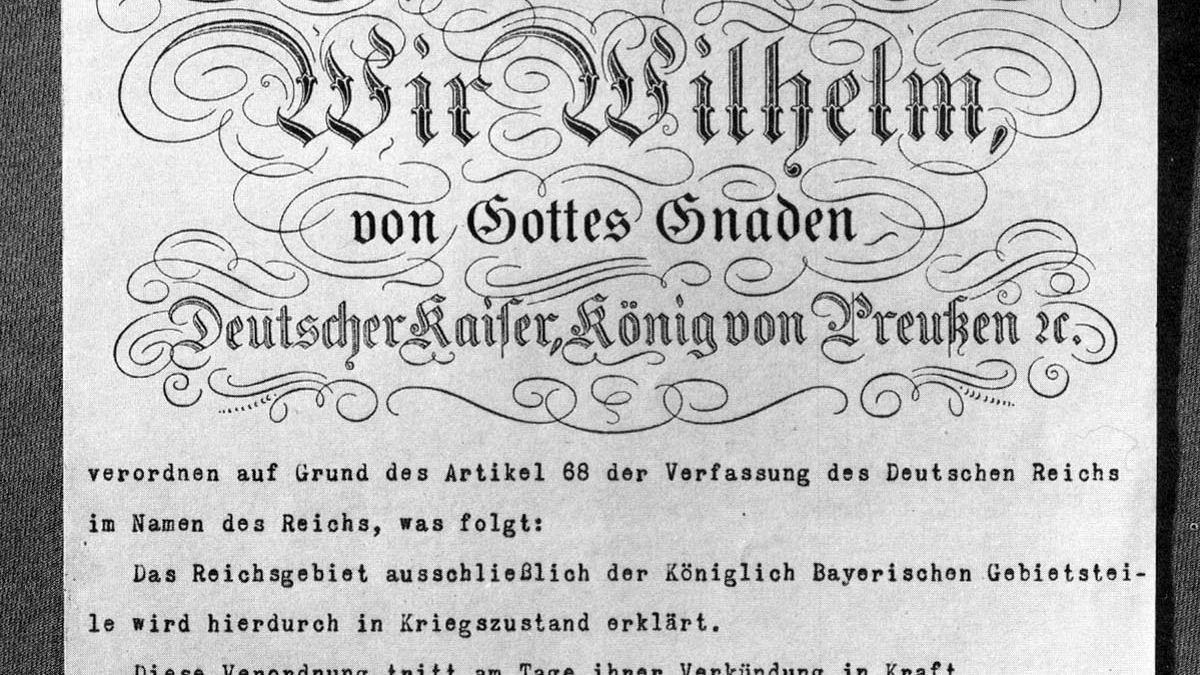1914: August 1
Following the declaration of war by Austria-Hungary on Serbia on July 28, 1914, Russia began to mobilise its forces to defend its Balkan ally. Germany – whose allegiance was to the Austro-Hungarian empire – responded by demanding Russia halt all military preparations, while at the same time beginning its own mobilisation. The Russians refused and as a result Germany declared war on Russia on August 1.
Anticipating a reaction from France – an ally of the Russian Empire – the first German units crossed into Luxembourg on August 2. The strategy, modelled on the ‘Schlieffen plan’ drawn up at the start of the 20th century, was to carry out a large and swift attack on France through Belgium before moving east to take on Russia, which they calculated would need six weeks to mobilise its troops. The Germans predicted they could defeat France in six weeks and that this would be enough to stop Britain from entering the conflict. By August 3 Germany and France were officially at war.
Until this point Britain had been hesitant about any involvement in the quickly-escalating situation, despite being part of the ‘Triple Entente’ alliance with France and Russia. But when German troops targeted neutral Belgium, a country which held a treaty with Britain, the British were forced into action.
(function(d, s, id) {var js,ijs=d.getElementsByTagName(s)[0];if(d.getElementById(id))return;js=d.createElement(s);js.id=id;js.src="//embed.scribblelive.com/widgets/embed.js";ijs.parentNode.insertBefore(js, ijs);}(document, 'script', 'scrbbl-js'));By August 4 Germany was officially at war with Russia, France, Belgium and Britain. On the other side of the Atlantic the United States proclaimed its neutrality in the war, a position favoured by the most Americans. Italy had also declared its neutrality days earlier.
By mid-August, various declarations of war created two distinct sides in the conflict: fighting for the Central Powers were Germany and Austria-Hungary, while opposing them were the Allied or Entente Powers of France, the British Empire, Belgium, Russia and Serbia.
